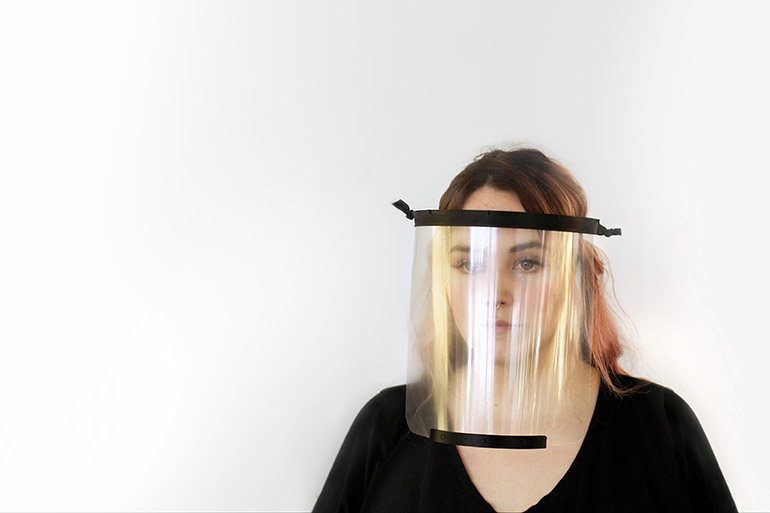UBCO teams up with community partners to design medical PPE
3D printed face shields approved for use with the Interior Health Authority
With an increased demand for medical-grade personal protective equipment (PPE) during the COVID-19 outbreak, UBC Okanagan’s School of Engineering and makerspaceUBCO—an interdisciplinary design and fabrication lab—have partnered with the Okanagan Regional Library and the Interior Health Authority (IHA) to design and produce 3D printed, medical-grade face shields for front-line health care workers.
Ray Taheri is an engineer at UBC Okanagan with expertise in manufacturing and 3D printing. He was brought into the project after the university was contacted by Dallas Rodier, a Kelowna resident with a keen interest in finding a printable solution to PPE shortages.
“Dallas did a great job pulling together some open source designs for a 3D printed face shield,” says Taheri. “We’ve been working closely together to refine the design and streamline the manufacturing process so that they are of sufficient quality and meet the needs of IHA.”
While the group’s manufacturing capacity is modest relative to established industrial producers, the team hopes that the combined printing capacity of UBC Okanagan, the Okanagan Regional Library, Okanagan College and a group of private citizens will mean that they are able to get critical equipment into the hands of local front-line health care workers quickly.
makerspaceUBCO is playing a key role in coordinating supplies and in the early manufacturing process. Cortnee Chulo is the facility manager and says this kind of project is exactly why makerspace was created in the first place.
“Our mandate is to connect creators and innovators right here in our community,” says Chulo. “It is incredible to see our mission being fulfilled in a tough situation we never anticipated and in a collaborative way that addresses such a critical need.”
Chulo says that there are 15 printers ready to be deployed at UBCO alone and that the team has been working hard, not only to finalize design and prototyping but to put appropriate 3D printing protocols in place to ensure the face shields meet medical standards.
“We have some incredible student volunteers from UBC Okanagan’s Southern Medical Program who will be collecting all the printed components, before we are able to conduct quality checks and the final products are delivered to IHA,” says Chulo.
Taheri adds that the design and manufacturing process hasn’t been without its challenges.
“We needed, for example, a product that could be sanitized and re-used but that is simple enough to be assembled quickly by hand,” he says. “IHA has been working closely with our teams to verify the prototypes and make sure we’re supplying something they can use.”
Chulo says she’s excited to ramp-up production in the coming days and thinks they’ll be able to produce several hundred per week. But she’s quick to point out that their solution is an interim measure until commercially produced facemasks can meet unmet demand.
“We’re not aiming to replace commercial manufacturers but to address an immediate need in our community. I’m grateful to all those that have volunteered their time and expertise to do exactly that.”

